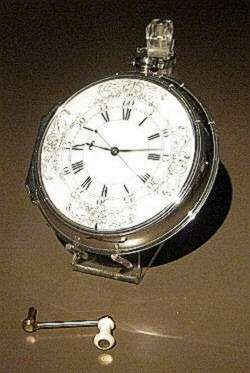Time and Age: Time Machines, Relativity and Fossils

Everybody knows what time is, but it is difficult to define.
A dictionary definition 'The indefinite progress of existence, events etc., in past, present and future regarded as a whole.' would not make much sense unless one already had some idea of what it is. For primitive hominids the passage of time was evident from the rise and fall of the Sun during the day and the passage of the seasons.
Civilized societies needed to measure the passage of time on a daily basis and also to indicate the stage that had been reached in the yearly cycle. For the former purpose clocks were constructed, initially rather crude indicators depending on the flow of water, the rate of burning of candles or sundials. Mechanical clocks started as very primitive devices but, by the 18th Century there were chronometers of sufficient accuracy for navigators to determine their longitudes with some precision.
All these steps in the development of clocks - time machines - are described together with the principles behind quartz-controlled watches and clocks and the ultimate atomic clocks that are correct to one second in three million years. The principles behind calendars, developed by different civilizations, are explained, the difficulty being to design a calendar that does not drift with respect to the Earth's orbit around the Sun.
Related to time is the concept of age, the time that has elapsed from some instant when the entity first came into existence. The book first deals with the methods of determining age for astronomical entities - the Universe, galaxies, star clusters and the stars within them. Techniques are also described for determining the age of the Earth and the time that has elapsed since the continents reached positions that clearly resemble those seen today.
At a different level, methods are described for measuring the ages of fossils and, coming to more recent times, the artefacts from different stages of man's development, from prehistoric stone tools and pottery to those originating from just a few hundred years ago.
The science involved in various aspects of this book is explained in a non-complicated way that should be accessible to any reader with an interest in scientific matters.
Entitled "Time and Age: Time Machines, Relativity and Fossils", this book authored by Professor Michael Mark Woolfson from University of York, addresses the measurement of time in relation to astronomical time. It also touches on how time was recorded in the early human history and how this evolved to mechanical clocks and modern timekeeping. Professor Woolfson also addresses the age of the universe along with globular clusters, young stars and the solar system. Ages on earth that include the age of the continents, fossils, life of earth and the archaeological remains are addressed in the last few chapters.
More information:
www.worldscientific.com/worldscibooks/10.1142/p975
Provided by World Scientific Publishing